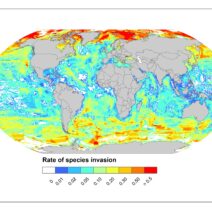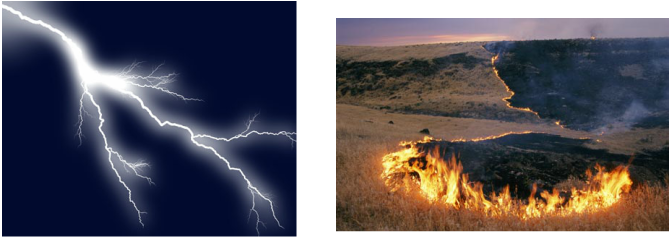The climate in grasslands presents a complex tableau, characterized by wide open spaces and variable weather patterns. Encompassing regions ranging from the temperate zones to subtropical areas, grasslands exhibit distinctive features that influence biodiversity, land use, and natural phenomena. This article delves into the multifaceted climate of grasslands, unraveling the climatic conditions, presenting varied types of grassland climates, and elucidating how these variables shape the environment and ecological dynamics.
Starting with the fundamental definition of grasslands, they are predominantly flat or gently rolling landscapes dominated by grasses, with few trees and shrubs. The climate in these regions is generally dictated by their geographical location, topography, and prevailing atmospheric conditions. Notably, there are two main types of grasslands: temperate grasslands and tropical grasslands. Each type showcases unique weather patterns, precipitation levels, and temperature ranges.
Temperate grasslands, often termed prairies or steppes, are located primarily in the mid-latitudes. The climate in these areas typically experiences a continental pattern, characterized by four distinct seasons. Summers are generally warm to hot, with average temperatures reaching up to 30°C (86°F), while winters can be brutally cold, with temperatures plunging to -20°C (-4°F) or lower. This seasonality dictates the types of vegetation that flourish and the wildlife that thrives.
Precipitation in temperate grasslands is relatively moderate, averaging between 250 mm to 1,000 mm (10 to 40 inches) annually. However, rainfall is not evenly distributed throughout the year. Instead, most precipitation falls during the growing season in the form of rain, while winters are typically dry. This seasonal drought can lead to significant variability in moisture levels, impacting plant growth and ecosystem dynamics.
Tropical grasslands, commonly known as savannas, differ greatly from their temperate counterparts. These regions, primarily found near the equator, experience a more consistently warm climate, with average temperatures hovering around 20°C to 30°C (68°F to 86°F) all year long. However, what truly sets tropical grasslands apart is their pronounced wet and dry seasons. They usually boast a rainy season that lasts several months, providing ample moisture for grasses and supporting diverse wildlife. The dry season can be severe, leading to drought conditions and influencing the migratory behaviors of animals seeking greener pastures.
The interplay of temperature and precipitation in both types of grasslands is crucial for understanding their climate. For instance, while temperate grasslands exhibit more temperature variability, making them susceptible to phenomena like freezing rain or droughts, tropical grasslands exhibit explosive vegetation bursts during the rainy season, thanks to the climatic stability provided by constant warmth.
A vital aspect to consider is the role of climate change in shifting these patterns. The impact of global warming is significantly felt in grassland regions. Rising temperatures can intensify drought conditions in temperate grasslands, reducing biodiversity and exacerbating the risks of wildfires. Moreover, fluctuations in precipitation patterns can lead to increased soil erosion and challenges for agricultural practices. In tropical grasslands, climate change risks extending the dry season, which, coupled with higher temperatures, can threaten the delicate balance of the ecosystem and the wildlife that depends upon it.
Another essential component in understanding the climate of grasslands involves how these ecosystems manage extreme weather events. Grassland landscapes have evolved to accommodate their climate’s variability. For example, the root systems of grasses are often deep and extensive. This adaptation allows them to access moisture that may be unreachable for other plants, ensuring survival even during prolonged dry spells. Furthermore, the growth habits of grasses, including their ability to quickly regenerate after fires, are crucial mechanisms that promote resilience against climatic shifts.
Climate influences not only the flora and fauna of grasslands but also the human activities within these regions. Agriculture is a significant aspect, where farmers and ranchers must adapt their practices to accommodate the climate’s variability. In temperate grasslands, for example, farmers might adopt crop rotation or other sustainable practices to mitigate drought impacts and improve soil health. In contrast, those in tropical regions may have to focus on managing water resources effectively to cope with both wet and dry periods.
Despite the challenges posed by the variable climate, grasslands serve as critical carbon sinks, sequestering carbon in their extensive root systems. As such, maintaining their health is paramount in the fight against climate change. Protecting and preserving these ecosystems can yield broader benefits, not only for local communities but for global climate stability. As climate change continues to pose significant threats, it is vital that concerted efforts are made to understand and adapt to the evolving climate in grasslands.
In conclusion, the climate in grasslands is an intricate tapestry woven from multiple elements: temperature, precipitation, seasonality, and adaptation strategies. Understanding this complex interplay is essential for appreciating the ecological significance of grasslands and recognizing the urgent need for their conservation amidst a changing climate. By fostering awareness and implementing sustainable practices, we can ensure that these vital ecosystems remain resilient, safeguarding both their biodiversity and their critical role in ameliorating climate change.







